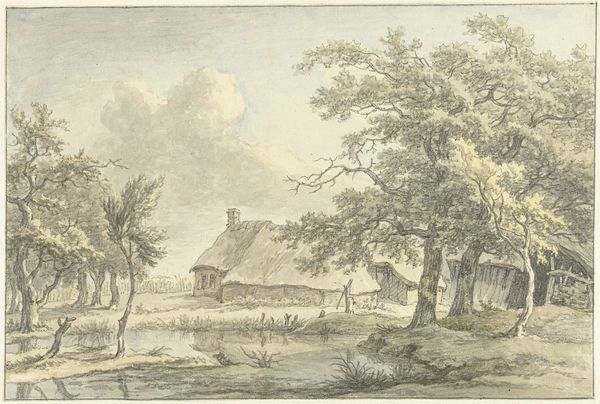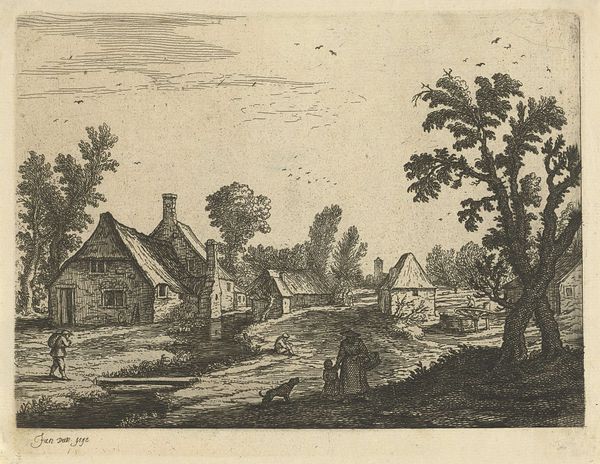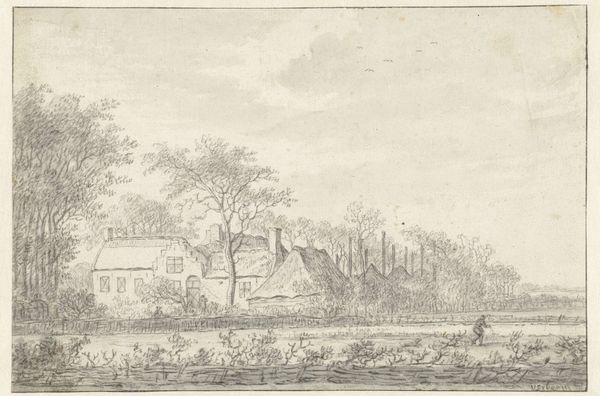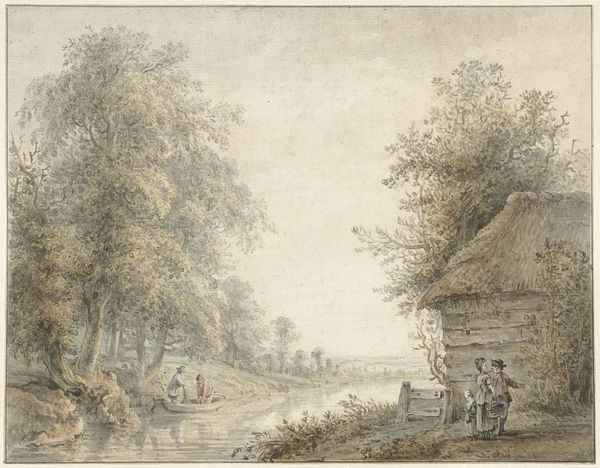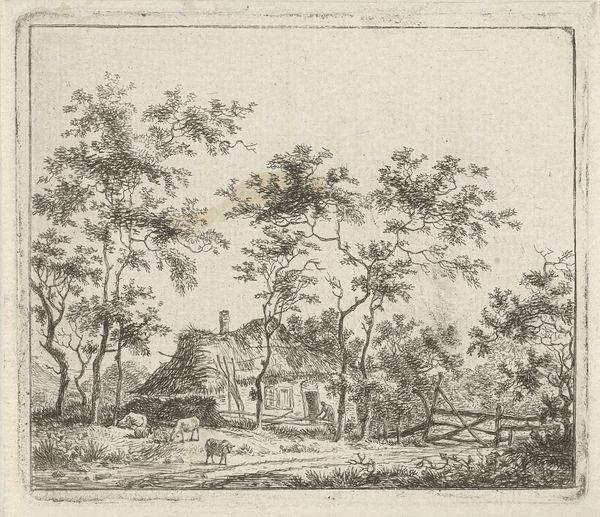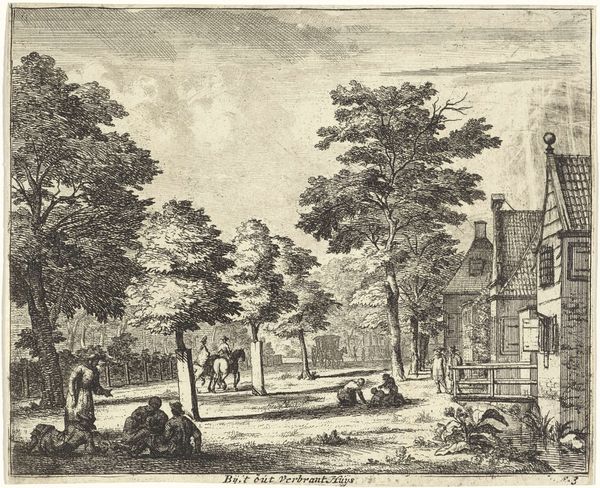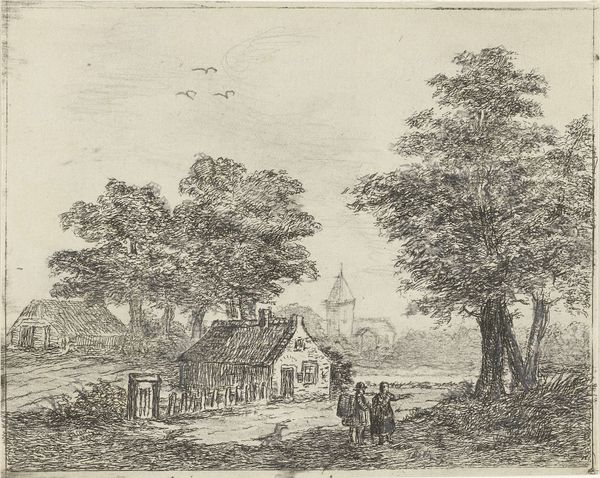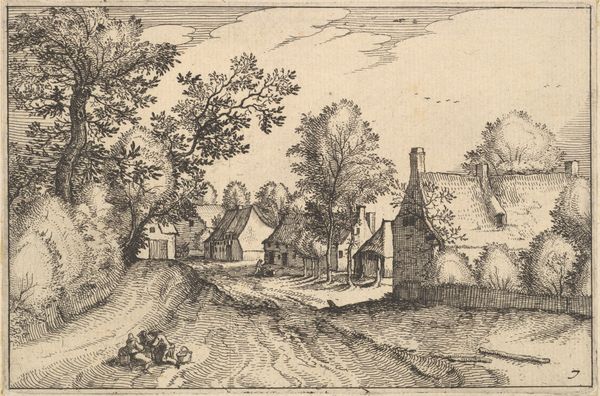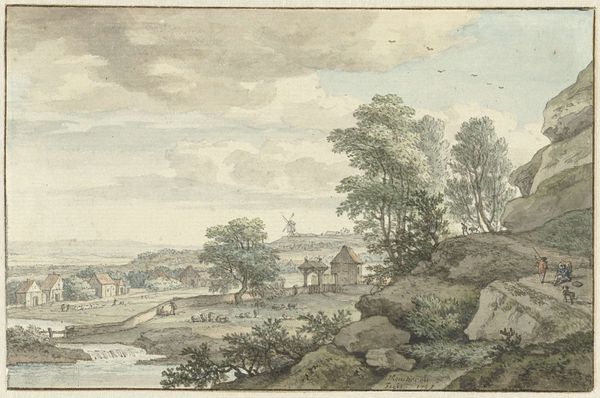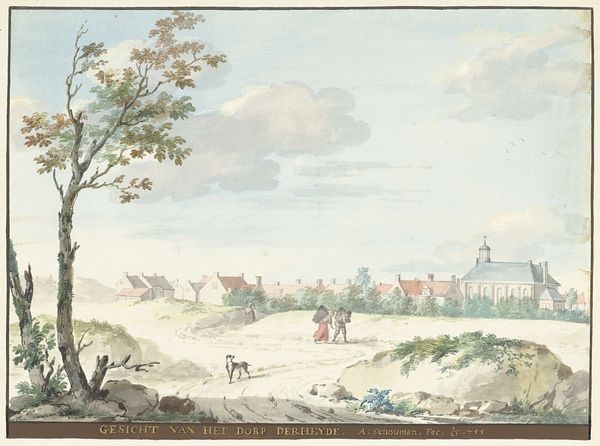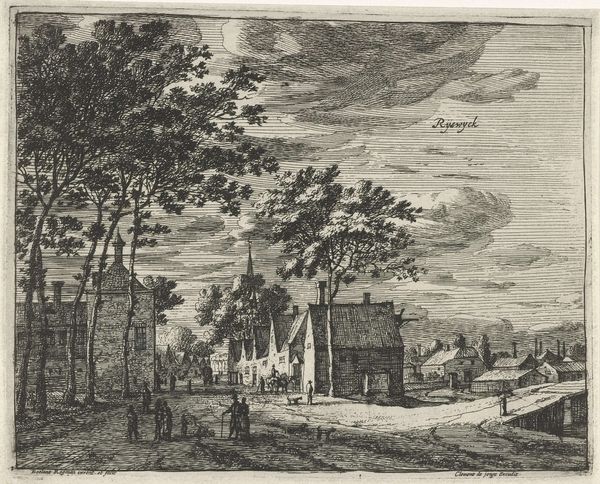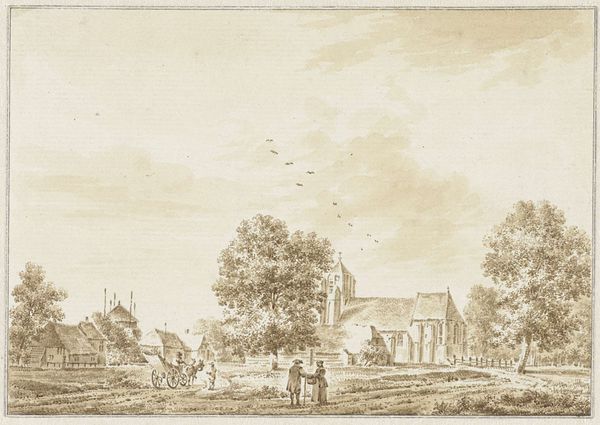
painting, watercolor
#
dutch-golden-age
#
painting
#
landscape
#
watercolor
#
romanticism
#
watercolor
Dimensions: height 207 mm, width 306 mm
Copyright: Rijks Museum: Open Domain
Curator: This delicate watercolor presents a serene vision, wouldn’t you agree? Jacob van Strij likely completed "Old Farmhouse by a River," as it translates, sometime between 1790 and 1810. Editor: It certainly does evoke tranquility. There’s a certain pre-industrial charm, though, I find myself immediately drawn to the raw materiality. It's interesting how watercolor, often seen as preparatory, becomes the final, marketed piece. It reminds us that even "finished" art is contingent on specific commercial and workshop processes. Curator: That’s an interesting point. The technique itself seems rooted in a particular moment in the development of Dutch landscape painting. This piece draws heavily from Dutch Golden Age traditions of landscape and picturesque subject matter. Van Strij places the farmhouse prominently. Note how he positions the humble rural dwelling at eye-level—this elevates it, granting dignity to rural labor in the face of encroaching urbanization. Editor: Exactly! We see the means of subsistence rendered visible, not idealized but situated in a real locale—a riverside industry perhaps related to agriculture or fishing—notice the figures pulling in what could be fishing nets. I wonder if the choice of watercolor made the artwork more easily replicable. This may suggest prints intended for broader consumption and potentially influence social attitudes towards the rural environment, presenting both its functional aspects and the allure of nature. Curator: It definitely captures a moment of social transition, an idealized countryside juxtaposed against those windmills in the distance and sailing ships beyond them on the horizon—harbingers of industrialization—it seems calculated to appeal to buyers yearning for what they felt was slipping away. These landscapes became valuable assets for those seeking to reconnect with the land. Editor: Agreed. I see Van Strij here working within that romanticized version of nature, using the relatively new artistic status of watercolor as a material form to further spread imagery linked to very specific ideals of social place and class. Curator: Yes, it’s all carefully constructed imagery shaping, reinforcing, and catering to cultural anxieties of the time. Editor: Considering all the aspects of making available in this work gives it far richer layers than a simple landscape. Thank you, I’m taking away several key ideas on how landscape imagery relates to its modes of production.
Comments
No comments
Be the first to comment and join the conversation on the ultimate creative platform.
